When I stepped up to the edge of Puente Nuevo in Ronda, my heart started racing. I looked down into the dizzying drop of El Tajo Gorge, and it hit me—I was standing on something truly unforgettable.
This stone bridge soars 120 meters above the canyon floor, and for me, it’s easily the most breathtaking landmark in this part of Spain. Every arch and shadow seems to echo with centuries of stories. The views spill out over olive groves and terracotta rooftops.
Ronda feels like a scene from a legend—white-washed houses perched on cliffs, and Puente Nuevo linking the old and new quarters high above the gorge. I kept pausing, torn between snapping photos of dramatic cliffs and just soaking up the peaceful Spanish countryside. This bridge isn’t just a marvel of stonework; it’s Ronda’s bold spirit made real.
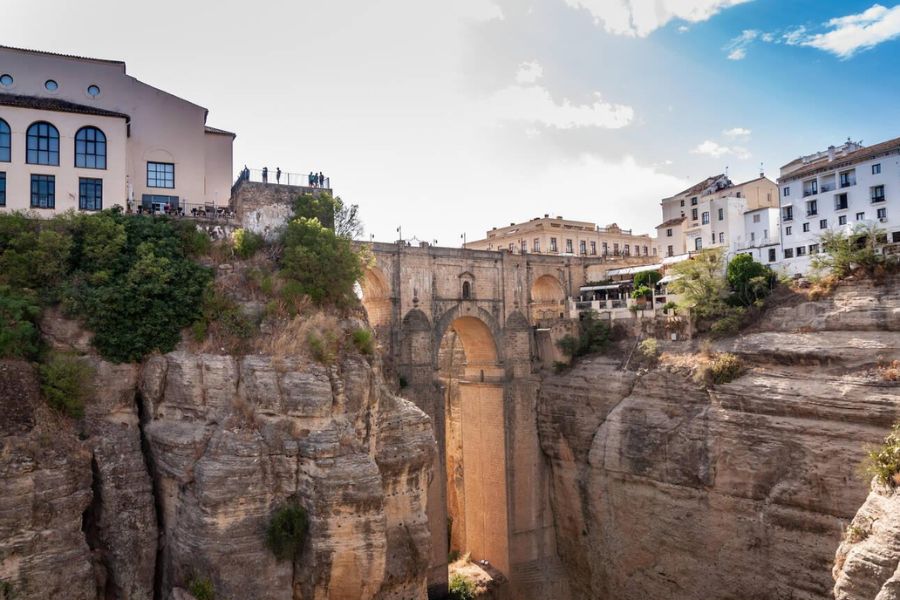
Exploring here gave me goosebumps and filled me with wonder. The sheer height of the gorge made my stomach flutter, but I couldn’t resist the legendary stories and vibrant streets that make Ronda one of Andalusia’s must-see places.
Puente Nuevo: The Icon That Defines Dramatic Spain
When I stand above the deep El Tajo Gorge, Puente Nuevo grabs my attention with its grand arches and that wild drop. This bridge doesn’t just connect Ronda’s two halves—it’s a window into Spanish history, local legends, and some seriously impressive engineering.
History and Construction
Crossing Puente Nuevo, I can’t help but imagine what it was like for the builders back in the late 1700s. They opened the bridge in 1793, but it took more than forty years and a lot of grit to finish.
They built it to join Ronda’s Old Town and New Town, which the 120-meter-deep gorge used to keep apart.
Earlier, smaller bridges just couldn’t handle the city’s growth. So, stonemasons hauled limestone, shaping it into a structure that towers over the Guadalevín River.
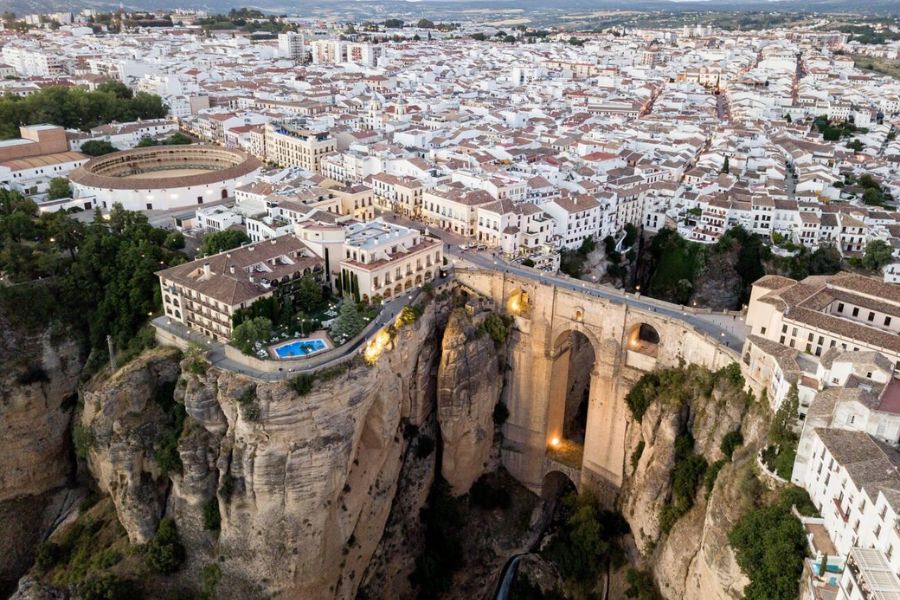
In the early years, tragedy struck—an earlier version of the bridge collapsed, and many people died. That’s a sobering reminder of the risks people took just to move forward.
Now, Puente Nuevo stands as a monument to human determination, not just a crossing. The arches frame jaw-dropping countryside, and the bridge’s history still pulses through Ronda’s daily life.
Architectural Marvels
From bottom to top, Puente Nuevo rises like a fortress fused with the rock. The central arch stands tallest, drawing all eyes, while smaller arches anchor the bridge to the cliffs.
I’m always struck by the balance of beauty and strength—this isn’t just a bridge, it’s a work of Spanish art.
Builders used ropes, scaffolds, and wooden cranes to haul massive stones over the gorge. The lower chamber, which once served as a prison, still hangs above the river with an eerie presence.
Sometimes I picture Spanish abbots or magistrates crossing here, feeling the dizzying drop below their feet.
As I wander, I spot carved reliefs and lookout points. Locals say this bridge inspired parts of Spanish literature—it’s a symbol of hope and connection.
When morning sunlight hits, the stone glows gold. Every photo I take feels like a ready-made postcard.
Legends and Stories
Stories swirl around Puente Nuevo, blending fact and legend. Some say lovers met in secret at the edges, the bridge their silent witness.
Others whisper about political prisoners locked in the lower chamber during rougher times.
There’s a tale of an abbot who saved townsfolk during a flood; locals claim he sometimes returns to the bridge on stormy nights.
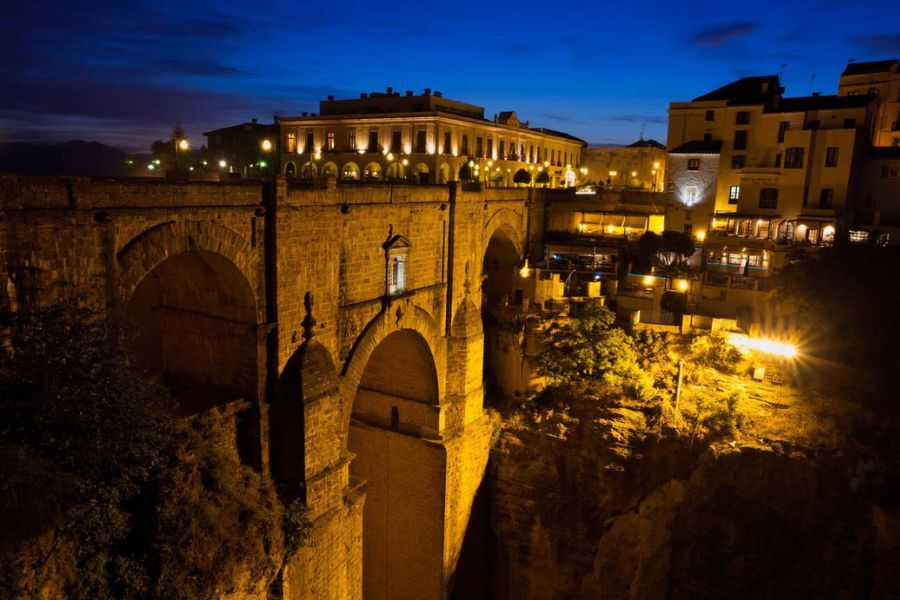
Guides love pointing out where Spanish poets once stood, scribbling lines into battered notebooks.
The air here feels thick with history. Standing at the rail, I sometimes wonder what echoes linger—love, fear, brave souls crossing from one world to another.
Gazing Into El Tajo Gorge: An Unforgettable View
At the edge of Ronda’s Puente Nuevo, I felt the pull of the landscape—sheer cliffs plunging down to poplars along the Río Guadalevín. Camera in hand and my pulse racing, it’s obvious this spot is all about soaking up the drama and beauty.
Vertigo-Inducing Perspectives
Looking over Puente Nuevo, the drop is dizzying—about 120 meters straight down. The bridge feels like it floats between two worlds: old Moorish town and the newer side of Ronda.
Even with sturdy railings, I gripped them a little tighter. Standing so high, with the city’s future stretching ahead and the river slicing through the past below, the view is as thrilling as it is beautiful.
I walk slowly across, stopping every few steps for a new angle. The valley shifts with each viewpoint.
Birds glide far beneath my feet, and the bridge’s design impresses me more every time—I mean, it united a town that a gorge once kept apart.
Photo Spots and Viewing Platforms
My favorite shots didn’t come from the bridge’s center, but from below and beside it. Several marked viewing platforms—like the Mirador de Aldehuela and the Balcón del Coño—offer sweeping views of the bridge, gorge, and the patchwork of poplars along the river.
Top photo tips:
- Below the bridge: Take a short walk for wide-angle shots, with the arches framed by cliffs.
- Old town rooftops: Some terraces on the southern end give you a bird’s-eye view, especially at midday when sunlight cuts through the gorge.
- Mirador locations: These spots have signs and safe barriers, perfect for relaxing and just taking it all in.
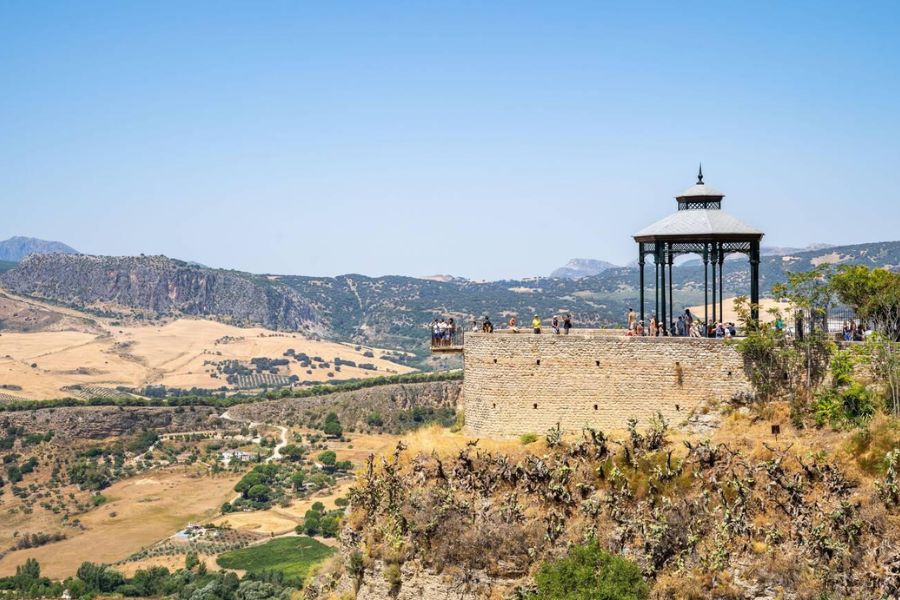
What catches me off guard is how the light shifts, throwing the gorge into shadow or setting the bridge aglow. I keep my camera ready—the scene changes every few minutes.
Sunset and Golden Hour Magic
When the day fades, the atmosphere transforms. The golden hour brings out rust-red and ochre tones, and the bridge looks painted with light.
I’ve watched the sun dip behind distant hills, the last rays hitting the stone. The poplars by the river shimmer, their green popping against the canyon walls.
This is what absorption feels like—just standing there, catching that fleeting warmth before night falls.
Sunset draws a crowd, so I try to arrive early to grab a bench or ledge. Most people fall silent, lost in the view.
For photos, this is the moment—dramatic contrast and long shadows stretching across the gorge.
Seville Day Trips
Ronda sits about two hours by car from Seville, so a day trip is totally doable. Early trains run, but I usually prefer to drive for more freedom.
I’ve met travelers who start in bustling Seville, then chase Ronda’s calm views by lunchtime. By late afternoon, they’re unwinding beside the gorge with a glass of local wine before heading back.
Timetables change, but buses and car rentals work if you want to stop in white villages along the way.

If you’re planning a visit, check current transport schedules. Spring brings lush landscapes—poplars in leaf and green fields beyond Ronda. It’s a memory waiting to happen.
Exploring Ronda’s Old Town and Vibrant Culture
Ronda’s old town mixes ancient architecture and a lively spirit. Every street corner bursts with life, art, food, and music.
Winding Streets and Architecture
As I wandered Ronda’s old town, I felt like I’d stepped into another era. Narrow cobblestone lanes twist between whitewashed houses, many with iron balconies and bright flowers.
The Moorish influence pops up in ancient gates and elegant arches.
I admired the Casa del Rey Moro, a centuries-old palace with gardens and secret stairs down to the river. It’s easy to lose track of time in small plazas or over café con leche on a sunny terrace.
The square in front of the Ronda bullring, one of Spain’s oldest, draws both tourists and locals for a taste of classic Andalusian architecture.
Theater and the Arts
Ronda’s arts scene surprised me with its energy. The main theater, Teatro Vicente Espinel, puts on plays, concerts, and dance all year.
I love how the building blends modern touches with historic charm—painted tiles and woodwork show off the city’s proud heritage.
Galleries dot the old town, displaying paintings, sculpture, and crafts. I met artists eager to share their stories.
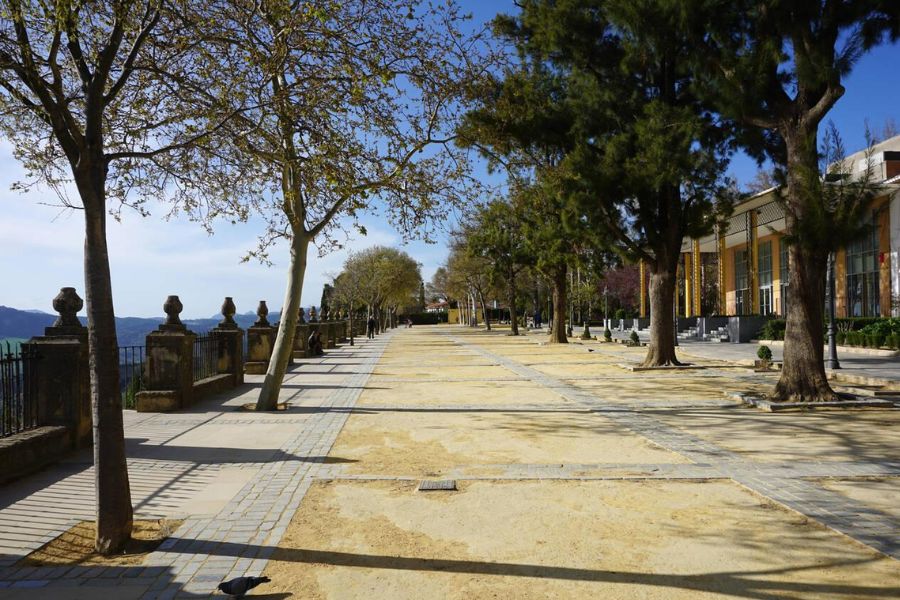
Ronda hosts regular exhibitions and events, mixing traditional Spanish works with contemporary pieces. These gatherings are great for meeting locals and getting a sense of Ronda’s creative heartbeat.
Spanish Musica and Festivals
Music in Ronda pulses everywhere—in the streets and at lively bars. My evenings overflowed with musica—the strum of a flamenco guitar or folk bands sparking spontaneous dances in public squares.
Each note feels woven into daily vita, bringing everyone together.
Local festivals, especially the Feria de Pedro Romero, add even more color and sound. Streets fill with parades, costumes, and live performances.
I joined crowds enjoying tapas (cibo) and street bands, swept up in excitement that feels so Andalusian. Whether you love traditional rhythms or want to discover something new, Ronda’s tempo is impossible to ignore.
Travel Tips for Visiting Puente Nuevo and Beyond
From my first steps onto Puente Nuevo, I realized timing, awareness, and how I wanted to explore would shape my visit. Knowing when to go, how to stay safe near the gorge, and whether to join a tour or wander solo all made a difference.
Best Times to Visit
I’ve found that early mornings—just after sunrise—give me the best views and the fewest crowds. The light is soft, perfect for photos of the bridge and the gorge.
Late afternoons work too, especially if I want that sunset glow. The bridge starts to shine as the sun drops, and local life trickles back to the plazas.
In peak summer, I avoid the midday heat, since it can easily top 30°C. I plan my visits around siesta hours.
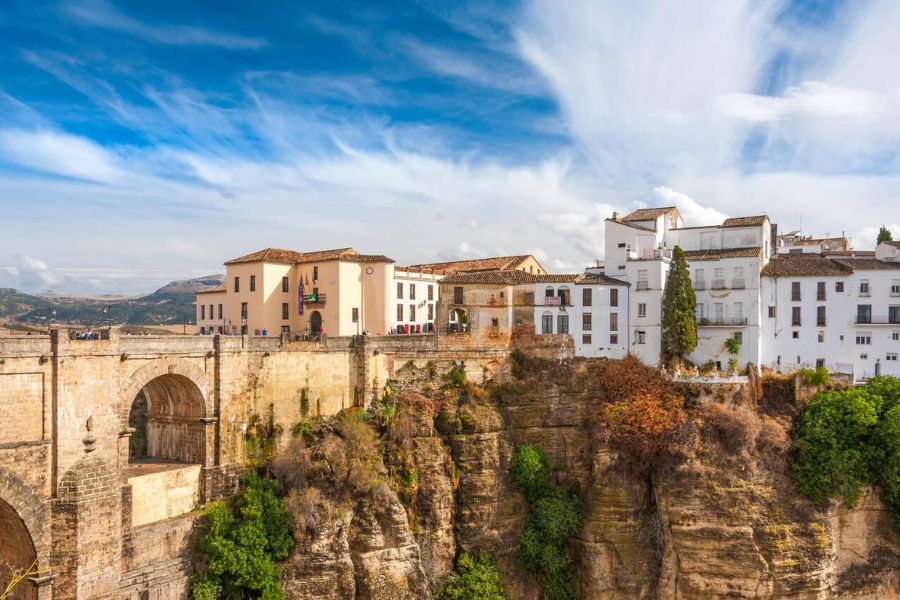
If you’re coming from abroad, keep Spanish holidays in mind—Ronda fills up fast during festivals. I always check the local calendar (presente) to dodge unexpected crowds.
Staying Safe Near the Edge
The El Tajo gorge drops over 100 meters, so safety is always on my mind. Railings are sturdy but not high, so I keep back from the edge.
I never climb for a photo—no shot is worth that risk.
If I’m with kids or anyone who struggles with uneven ground, I watch them closely near lookout points. Sturdy shoes are essential, since some paths get slippery after rain.
I stick to marked paths. Some tourists go looking for “secret” viewpoints, but those can be dangerous.
The local accident rate isn’t high, but I’ve seen a few close calls. When I’m unsure, I ask a local or a guide for the safest spots.
Guided Tours vs Independent Exploring
Sometimes I join a guided tour, especially when I want to hear the stories behind Ronda’s history and the Puente Nuevo.
Good guides share facts about the bridge’s 18th-century construction and talk about how it shaped Ronda’s present (presente).
Many tours take you to hidden viewpoints or tapas stops, and they’ll toss in stories about famous visitors like Orson Welles or Ernest Hemingway.
When I go solo, I set my own pace.
I can pause at quiet corners, sketch, or just soak in the view without a group hovering nearby.
I wander through nearby plazas, poke around ruins, or pop into small museums whenever the mood strikes.
If I’m in town for a quick anniversary trip or just have a few hours, I grab a walking route or a map from the tourism office.
Both guided and independent visits feel rewarding, as long as I stay aware and a little prepared.
The Surrounding Region: From White Villages to Spanish Poetry
Outside the drama of the Puente Nuevo, Ronda’s region unfolds like a tapestry of old villages, poetry, and everyday Andalusian culture.
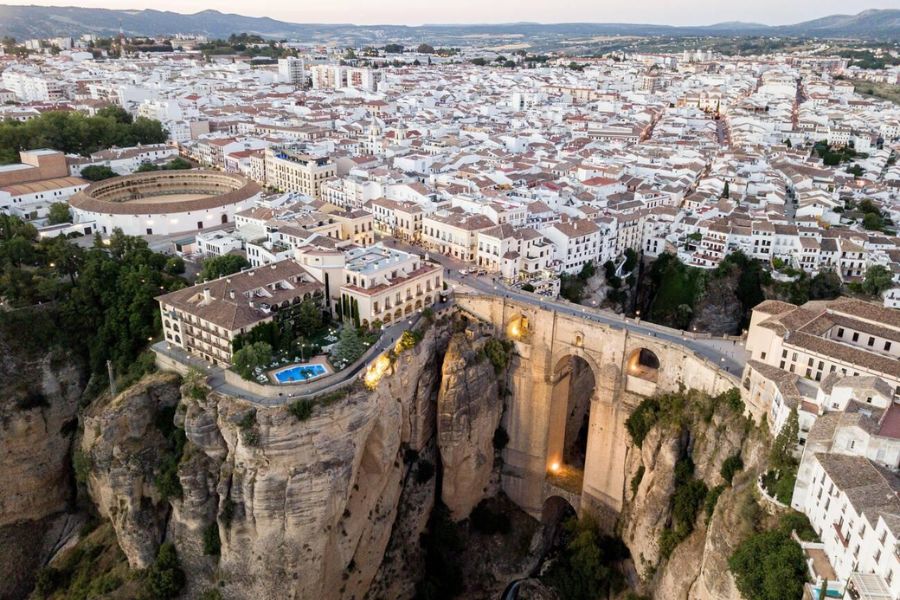
Every path and plaza seems to hold layers of tradition and daily life that pulled me in from the start.
Andalusian White Villages
I found the white villages, or pueblos blancos, shining across the hills like pearls scattered on green and brown land.
These villages—Zahara de la Sierra, Grazalema, Setenil de las Bodegas—sit close enough for a day trip from Ronda.
Their whitewashed walls bounce back the fierce Andalusian sun, keeping every casa cool inside.
Strolling through the narrow alleys felt like stepping into a painting.
Women, or donna, swept their front steps, and flowers spilled over iron balconies.
Life moves slowly here.
Many villages trace their roots to Moorish times and welcome you with peace and hospitality.
A simple tapa on a quiet terrace, with mountain or olive grove views, often became the highlight of my afternoons.
Notable White Villages near Ronda:
| Village Name | Highlight | Distance from Ronda |
|---|---|---|
| Zahara de la Sierra | Hilltop castle, lake views | 40 km |
| Grazalema | Nature, wildflowers, hiking trails | 33 km |
| Setenil de las Bodegas | Cave houses built into rock | 18 km |
Influences of Spanish Poets
Ronda’s atmosphere feels like a living poem.
The mix of beauty and pain (dolore) in the landscape inspired some of Spain’s greatest writers.
I keep thinking of poets from the modernismo movement who found deep meaning in the cliffs and sky of southern Spain.
One name I come back to is Rainer Maria Rilke.
He wrote in Ronda and said the town let his creative spirit soar.
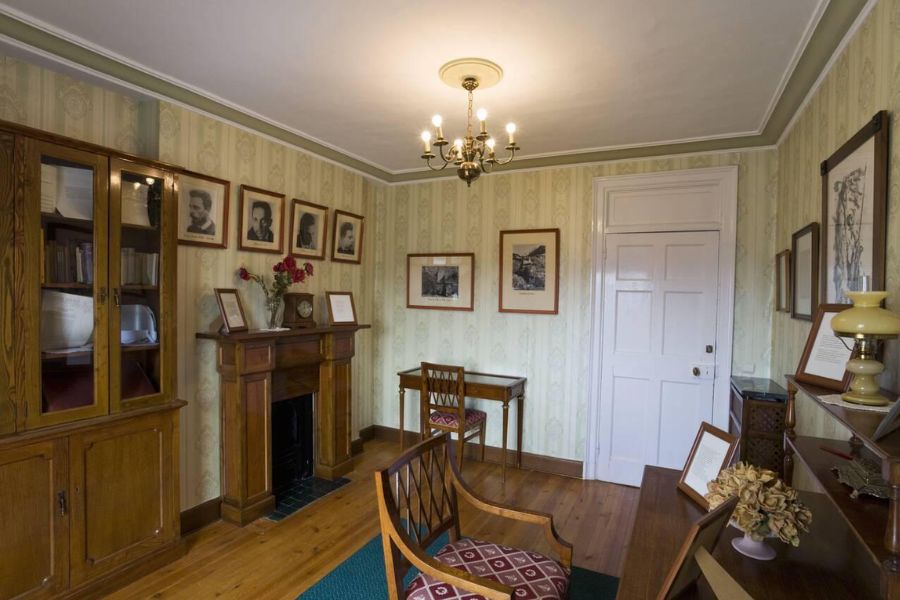
I learned about anni—years—of change and struggle as poets like Federico García Lorca searched for connections between people and the land.
Their words capture the sadness and hope of Andalusia, touching on love, longing, and loss.
Reading their poems above El Tajo or in a shady plaza, I felt history alive in every stone and breeze.
Immersing in Local Life
Old customs shape the rhythm of daily life here. People start their mornings early with coffee and sweet toast drizzled with olive oil, usually on a quiet corner near the market.
Afternoons slow down a lot. When siesta hits, folks close their casa doors tight against the heat.
In the evenings, everyone pours out onto the streets. Kids and grandparents stroll together, and laughter just kind of floats through the air.
I joined in for small festivals with the locals. Tried homemade tapas, and listened to Flamenco guitar in these family-run bars that feel like someone’s living room.
In Ronda and the nearby villages, I saw that history doesn’t hide away in museums. You’ll find it in the cooking, the music, and honestly, even in the way neighbors greet each other.
To me, every day felt a bit like living inside a poem. There’s this steady mix of beauty, dolore, joy, and tradition that you can’t really escape—would you even want to?

